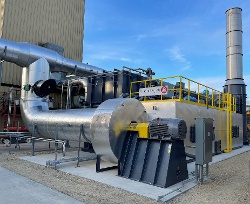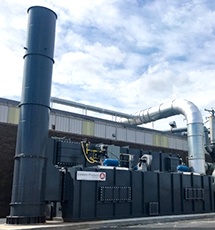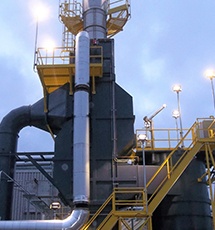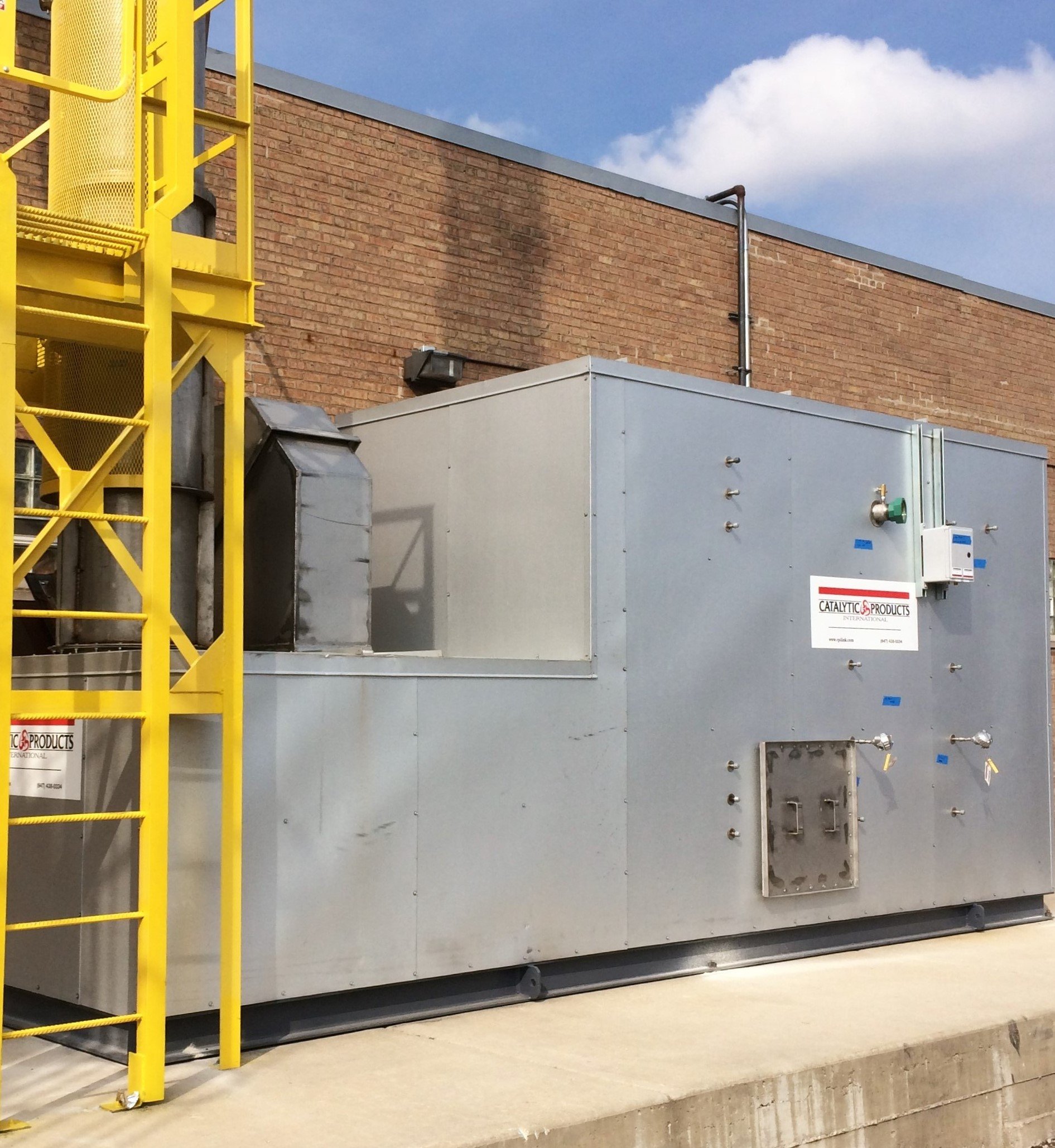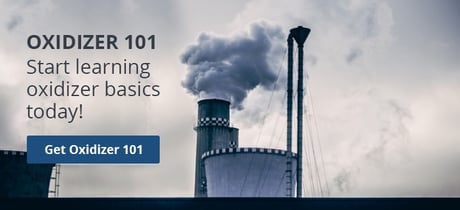Catalytic Products International (CPI) installed a Regenerative Thermal Oxidizer (RTO) at a Midwest manufacturer of silicon rubber insulation products in order to improve sustainability and reduce the carbon footprint of their process coating operations.
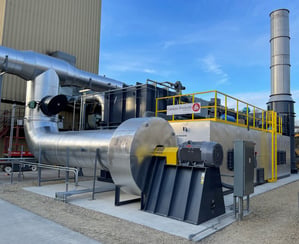
The new single TRITON 30,000 scfm Regenerative Thermal Oxidizer (RTO) replaced two (2) aging Recuperative Thermal Oxidizers. These older oxidizers had not only reached the end of their operating life but were also significant consumers of natural gas due to their low thermal efficiency design. The customer was able to reduce direct emissions, estimating that the carbon dioxide (CO2) reductions are equivalent to eliminating 250,000 gallons of gasoline consumption.
The new RTO will destroy the incoming VOCs from two (2) tower coater lines with continuous + 98% destruction rate efficiency (DRE) and +95% thermal heat recovery. This improvement in thermal efficiency results in a significant net reduction in CO2 emissions as compared to operating the existing recuperative thermal oxidizers. As an additional benefit, this customer was able to secure a rebate from their local natural gas utility for replacing the inefficient recuperative thermal oxidizers, with the more fuel efficient Regenerative thermal Oxidizer (RTO).
Thermal treatment of VOCs and other air pollutants works by a simple reaction of the harmful hydrocarbon-based air pollutants with oxygen and heat. In this environment, the VOCs are oxidized to form harmless inert by-products like CO2, water vapor (H2O), and usable heat. These harmless by-products are released to the atmosphere or used within primary or secondary energy recovery techniques to further lower the operational costs.
CPI Regenerative Thermal Oxidizers (RTOs) are engineered to provide exceptional performance and reliability. During operation of the standard two chamber RTO, the VOCs are directed into one of the system’s regenerators, an internally insulated vessel containing specialized ceramic media which allows thermal rate efficiencies up to 97%. The contaminated gases are passed through the first regenerator where energy is transferred from the ceramic media to the gas in order to elevate the temperature. This elevated temperature approaches the ignition level for most solvents and is then directed from the ceramic bed into the combustion chamber. As the stream exits the ceramic bed and travels through the internally lined combustion chamber, minimal heat is added to ensure a proper oxidation temperature and a designed dwell time is maintained providing destruction of the VOCS at greater than 98% efficiency. The resultant clean, oxidized gases are directed to the second regenerator to absorb the heat energy before being released to the atmosphere.
CPI reviewed the existing process exhausts and ducting system to ensure the new system would meet all of the plant needs. CPI ultimately completed a turn-key installation, including engineering, design and supply of the RTO. The installation of the RTO and related equipment included concrete pad design, ductwork, hot gas bypass and exhaust stack.
The new RTO was installed adjacent to the existing oxidizers prior to disconnecting and removing the old units. This approach guaranteed that entire system was installed correctly, returning the customer to fully operational status with minimal downtime.
CPI has been “Enabling Clean Production Since 1969” and continues as a leading supplier of air pollution control equipment. CPI is at the forefront in providing industries including the electronics industry with solutions to their air pollution control needs.
Today, CPI partners with its customers as a trusted resource in resolving the most complex air pollution and energy conservation problems. We provide our customers with innovative and cost-conscious solutions to their most complex VOC, NOx, and Odor pollution challenges. Our equipment is also at work meeting energy conservation strategies and minimizing greenhouse gas (GHG) emissions.

